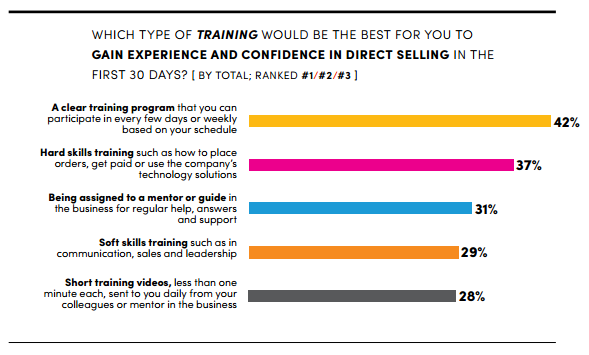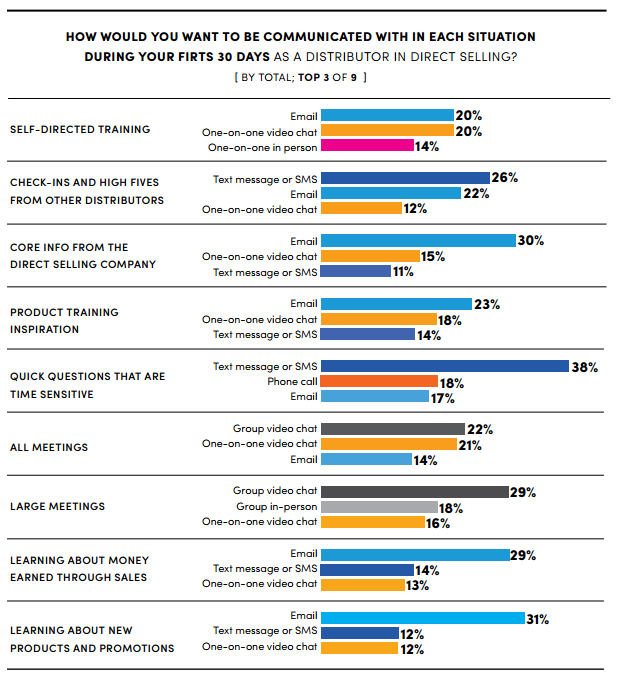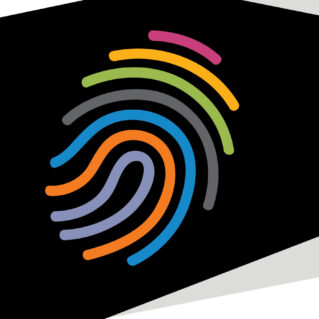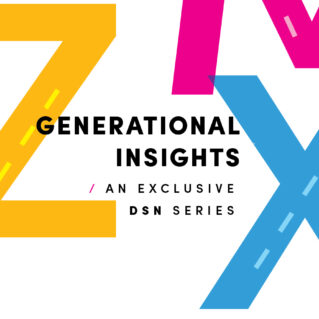Actionable insights and opportunities from the first-ever direct selling generational engagement study.
Direct selling has become an increasingly popular avenue for individuals to start their own businesses and earn income. To gain a comprehensive understanding of the perceptions surrounding direct selling, the Direct Sales Generational Engagement Study was conducted by Bridgehead Collective and carried out by The Center for Generational Kinetics, led by President Jason Dorsey.

In this first-of-its-kind study, Bridgehead Collective chose to partner with the Center for Generational Kinetics, which has led more than 100 research studies in all major industries. Their seminal annual study, The State of Gen Z, formed the basis for the best-selling book, ZConomy and has been consistently featured in national and global media including The Wall Street Journal, New York Times, CNN and many more.
I set out to discover America’s perceptions of entrepreneurship, the gig economy and—more pointedly—direct selling. Statistical significance was of ultimate importance in this analysis, so the study represents a wide-sweeping sample that is reflective of America, with an equitable mix of genders, demographics, employment status, education levels and location that allows for a 97 percent confidence level. This study aimed to explore the attitudes, motivations, limitations and beliefs about starting a business in America, as well as uncover perceptions of direct selling, recruiting strategies, onboarding methods, distributor retention and preferred payment structures.
We designed the study to provide actionable insights across 10 key categories:

- Perception of Industry and Channel
- Recruiting and Prospecting
- Motivations and Decision Criteria
- Onboarding and Getting Started
- Training
- Compensation and Value Proposition
- Recognition
- Incentive Trips and Events
- Retention
- Duplication and Role of Team Building
In this series, we are digging deeper into each of these categories, focusing this month on all things Training.
As we shared consistently throughout this series, the news surrounding all generations is that EACH generation is radically different in how they want to be prospected, talked to and approached about direct selling opportunities. We have highlighted that a “One-Size-Fits-All” approach simply doesn’t work anymore, and that feedback is amplified when it comes to Training.
Clear Blueprints and Guideposts
Last month we shared some shocking insights about Getting Started and Onboarding. Most of the shock factor came from the fact that an overwhelming majority of Younger Millennials and Gen Z preferred to be onboarded in person vs. online, or even working at their own pace. This is fueled by their underlying belief that they do not possess the skills necessary for success. The manifestations of this belief carry through just as strongly to what kind of training they believe is necessary for success and confidence in their new business. However, what we see transition a bit as we move from onboarding and getting started to ongoing training programs is a marked increase in the desire for “learn at your own pace” and other forms of on-demand training.

In fact, when we asked all generations which type of training would be the best to gain experience and confidence in direct selling in the first 30 days, the number one answer, in fact the number one choice of more than half of the respondents was:
“A clear training program that provides a roadmap for success, that I can review at my own pace, on my own schedule.“
This represents a clear differentiation in the data between how people want to learn at the very beginning and how they want to engage on an ongoing basis. Now, for followers of this series, you know we are all about putting data into action so that leads us to our first Action Item on this area of insight.
Action Item: Ensure that your training programs are easily accessible online; broken up into manageable segments of no more than 20 minutes; and in a format that can be consumed and worked completely on demand.
As we probed further into precisely what type of training all generations believed was necessary to give them confidence to build their businesses, I think two of the next three responses are going to surprise you.
The second most desired training is not a surprise, focusing in on “hard skills” training like how to place orders, get paid or engage with company technology (calling Captain Obvious). But after that, we start to see some of the really interesting generational differences come into play.
Rounding out the top five answers, we have:

- Being assigned a Trusted Guide in the business for regular answers, help and support.
- Soft skills training communication, sales, how to have conversations and speak to groups of people.
- Short training videos, LESS THAN ONE MINUTE EACH, sent to you daily from your colleagues, other successful people or your trusted guide.
Fascinating, right? What’s even more interesting is that when you break it down by generation, the desire for soft skills training leapt all the way up to number one for Gen Z. That’s right—the MOST requested needs for training for the future generation of direct selling leaders were for communication; starting and holding conversations; and how to speak to groups of people. Not sure about you, but most of the companies I work with don’t include this kind of foundational training AT ALL as part of their onboarding. Sales training, yes of course! Scripted exchanges for how to close a sale? Sure. But that’s not what we are talking about here. We are talking about very fundamental basics of how to hold conversations; how to follow up; how to engage with other humans in a professional way; and how to conduct meetings or communicate in business to small or large groups of people.
The data couldn’t be clearer—Gen Z (and to some extent, Younger Millennials) are crying out for help—and we would do well to listen.
Action Item: Go back to the basics—WAY back. Implement a fundamental communication training module as one of the very first elements of your training programs. If you’re not sure where to start, use the QR code at the end of this article to request information. Bridgehead has put some energy into designing a plug-and-play module that could help.
Fast, Frictionless, User Friendly
Now let’s talk for a minute about that last bullet. The ask is straightforward. Please send me—once a day—a short training video that will fuel my success from someone who has done what I need to do. Simple, right? Well, when’s the last time anyone at a direct selling home office created ANY training content that was less than one minute long?!? Right…thought so!

This speaks to the ongoing challenge of shortened attention spans and desire to engage in a fast and frictionless way.
Action Item: Issue a One-Minute Challenge to your top leaders to gather a TON of content to share out with everyone. Give clear instructions on a simple background, lighting, etc., and ask them all to share in ONE minute or less, their top tip for someone just starting out.
Then, put this into action! Take a cohort of new distributors (pick a month) and send them all one video a day for 90 days and compare their results to their performance from other months. What do you have to lose? The whole project will take little effort (remember, these are meant to be authentic and don’t need to be super polished). And it could yield tremendous results.
Another “wow stat” that emerged with this topic is the appeal of outside experts. Turns out, that virtual, live presentations by an outside expert on information that is relevant and helpful to build their business is most appealing to older generations, with 74 percent of Older Millennials and Gen X listing it in their top three, compared to only 24 percent of the younger generations. Something super interesting to consider when choosing how to allocate your dollars most effectively.
The Right Method for the Message
OK—that’s what each generation had to say about what KIND of training they were looking for, but what about HOW they want to be communicated with.
We all know the “what communication channel to use” struggle is real. Should we email everything? Text it? Post it? Push notification it? Put it in a Facebook group? Zoom it? Teams it? Or…worst of all…choose all of the above so they tune us out completely! We have seen so many companies wrestle with this issue, so we decided to get some data to help us sort it all out.
Turns out Americans have very different and distinct opinions on HOW they want to receive different types of information. That “One-Size-Doesn’t-Fit-All” axiom shows up again and again.
When asked “how you would like to be communicated with in each of the following situations in your first 30 days,” the answers were super clear—and very different for each type of communication.

There is a lot of information in that chart, so I encourage you to spend a few minutes digesting it, but here are some top-line highlights. Depending on the situation, Americans want to be communicated with very differently during their first 30 days as a distributor in direct selling.
Email is the preferred communication method when learning or receiving information.
Text is the preferred communication method for quick questions and check-ins.
Group video chat is the preferred communication method for meetings.
One-on-one video chat is a back-up communication method for most situations.
Action Item: Reorganize your Communication Plan by slotting different types of communication into precise and distinct channels based on this data.
Not only will it simplify your internal processes, but it will drastically increase your engagement and effectiveness, so all that effort spent crafting the perfect message is read, received and put into action.
Also, pay special attention to the strong preference for two-way, text-based solutions for both quick questions as well as high fives and recognition. You may want to consider how you are using text and ensure you are maximizing its effectiveness.
So that covers the training highlights, please look out for next month’s article where we jump into the crowd favorite and lifeblood of our industry: Compensation and Value Proposition.
I may have to see if I can get more pages for that one—lots and lots and lots to unpack so look for plenty of action items including a few proven quick wins that you can get up and running in less than 30 days.

With 20+ years of cross-functional experience in direct selling, Heather Chastain brings a solid understanding of sales, marketing, technology, manufacturing, operations and C-Suite challenges as well as a strong collaborative and relational style of leadership to the table. Heather has held executive roles at Shaklee, Arbonne International, Celebrating Home and BeautiControl. Heather also serves as the Strategic Advisor at DSN and is the Founder & Chief Executive Officer of Bridgehead Collective.
From the November 2023 issue of Direct Selling News magazine.


